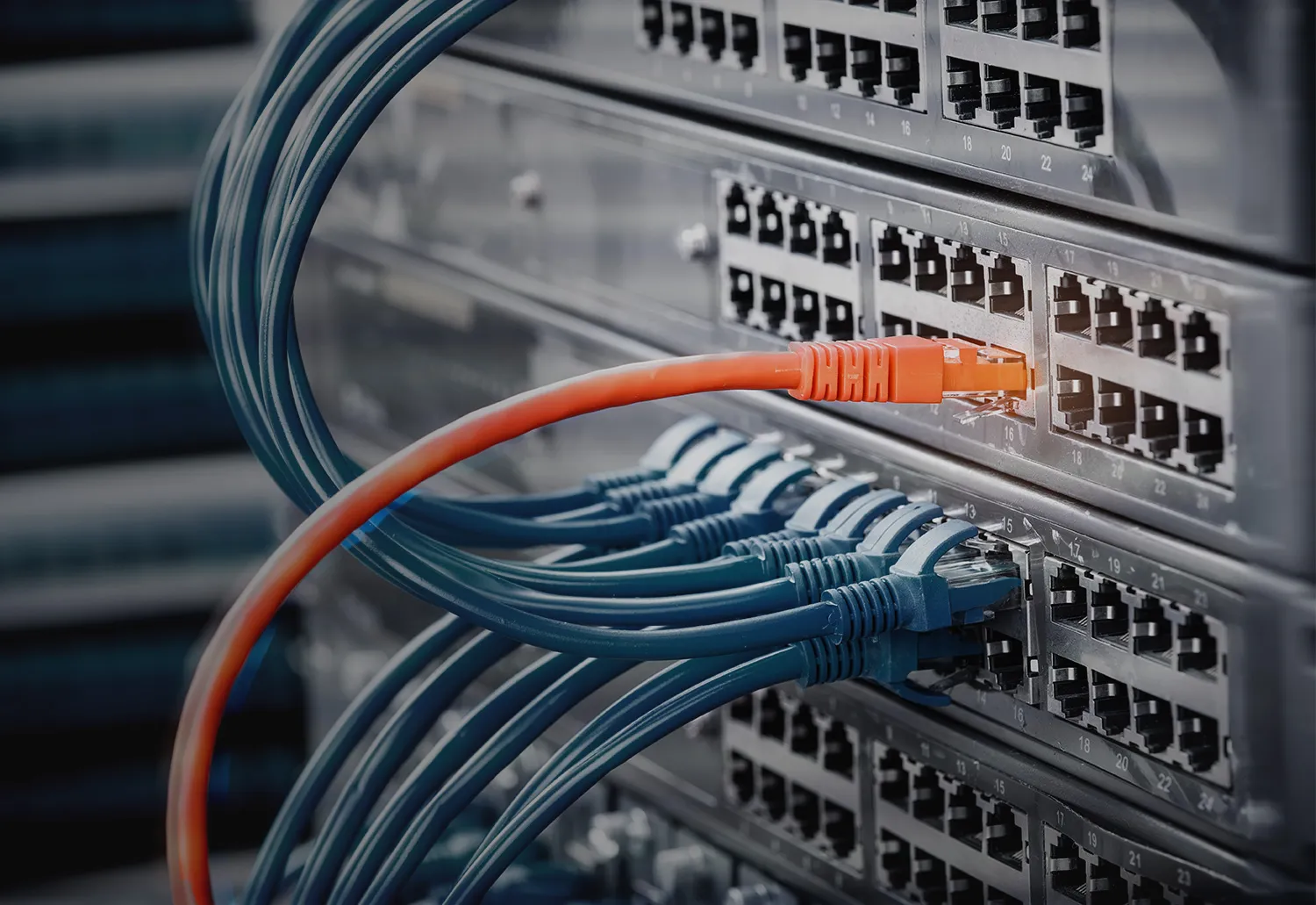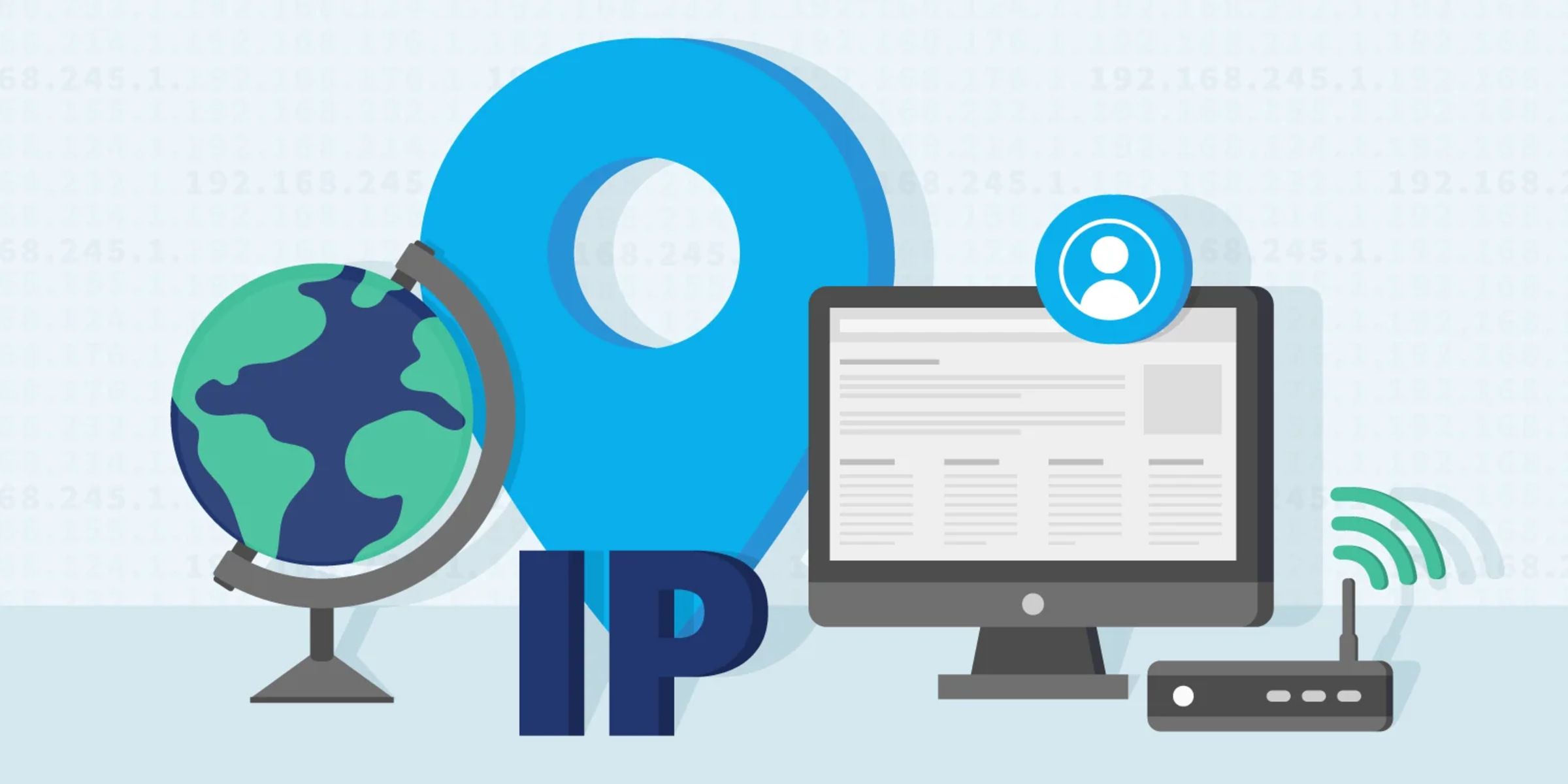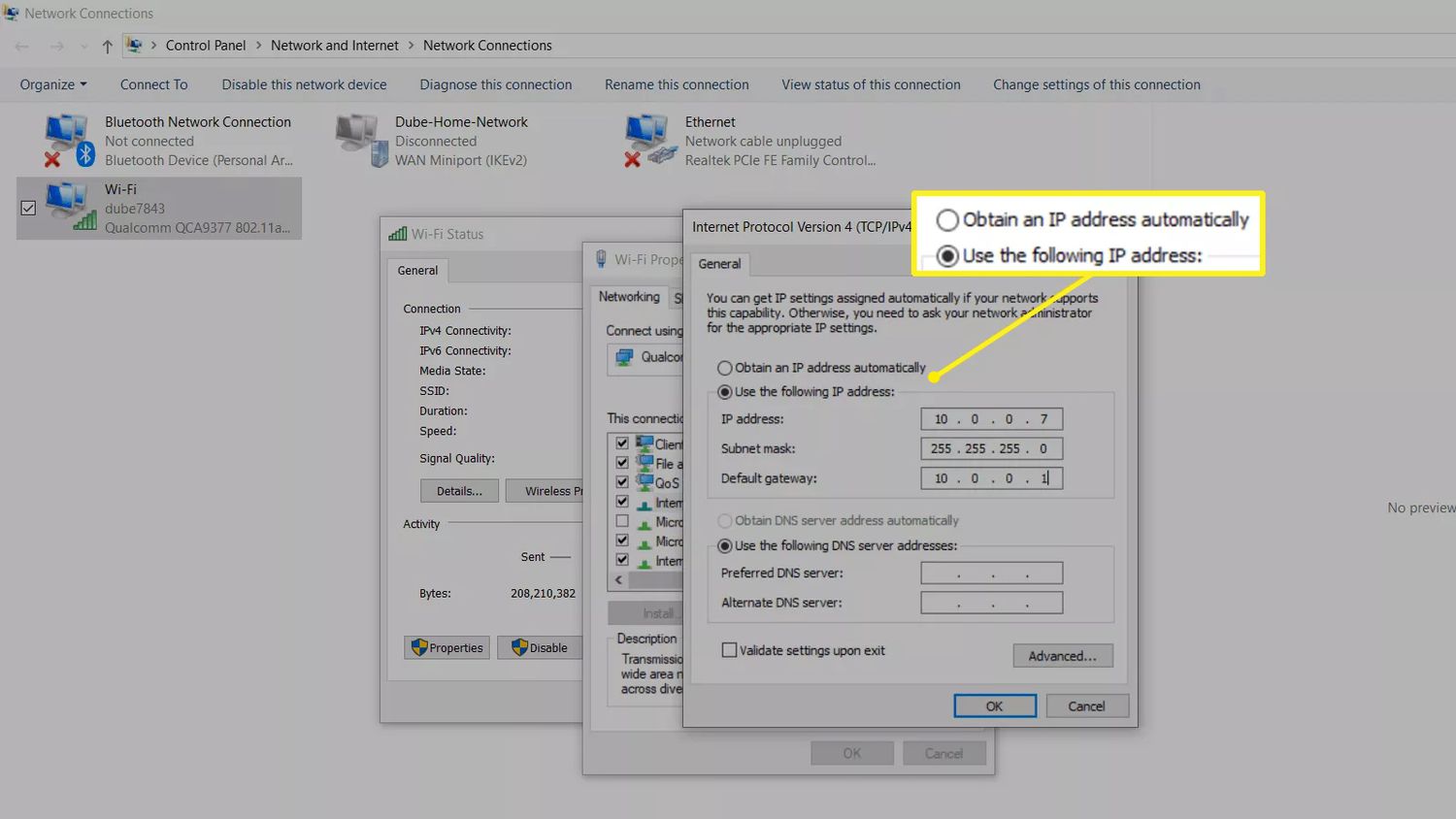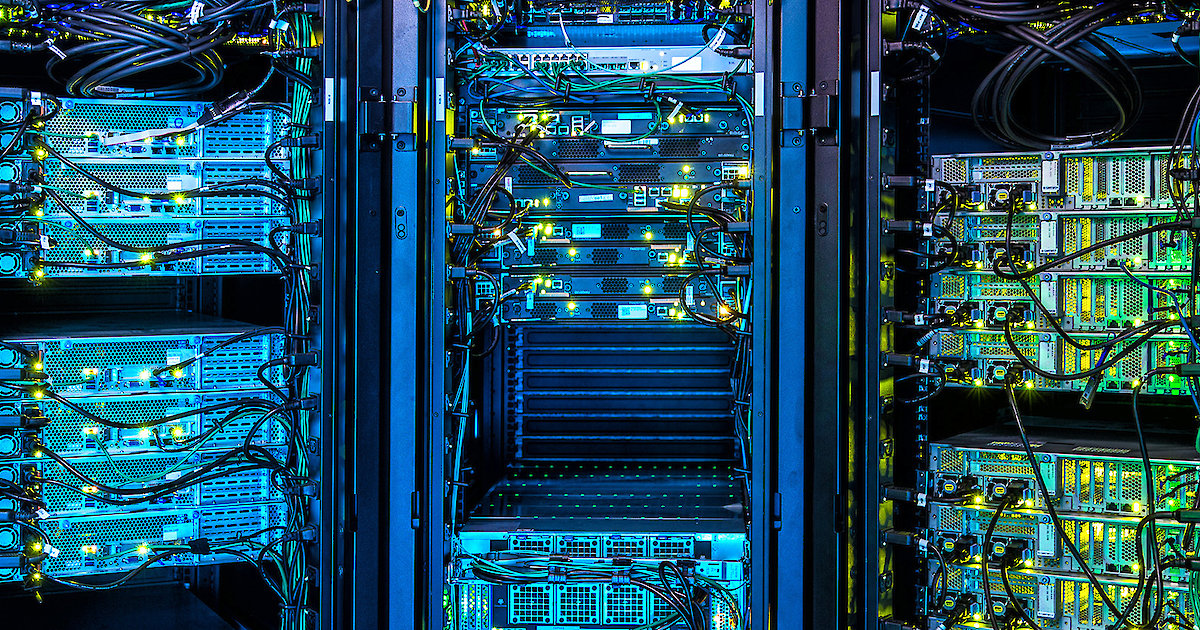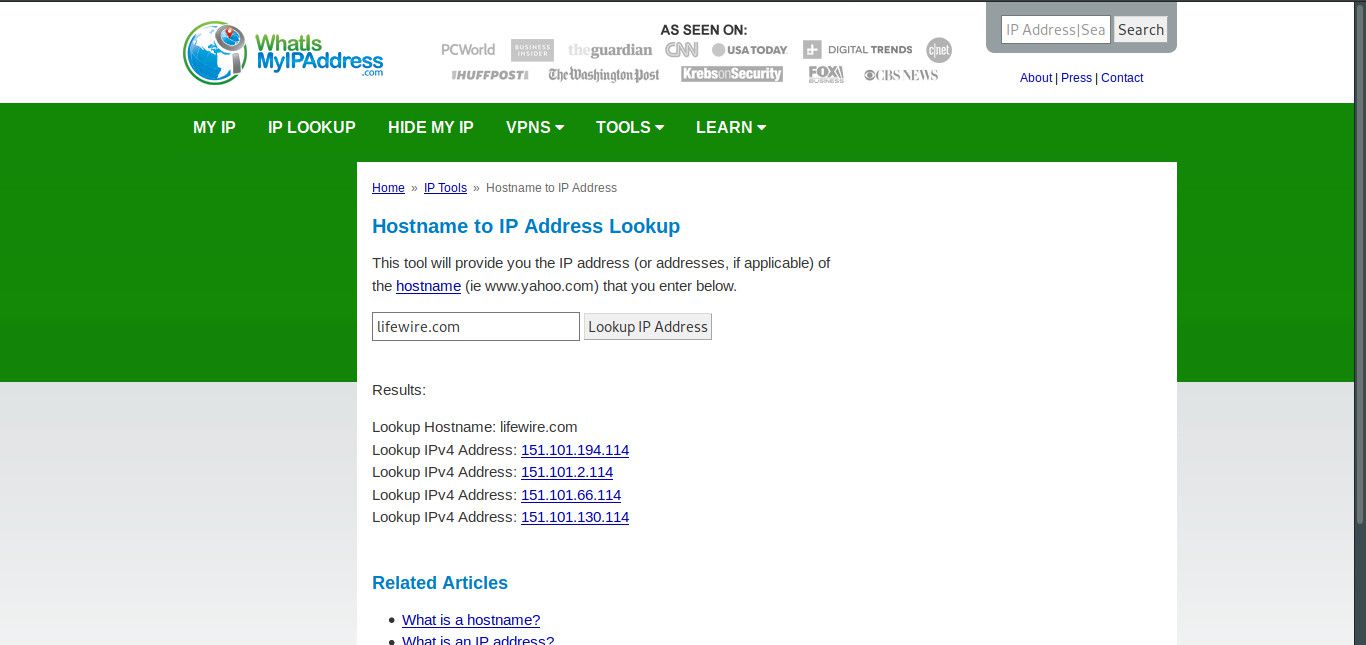Introduction
Welcome to the world of IP addresses. Whether you’re a tech-savvy individual or just someone interested in understanding how the internet works, IP addresses are a fundamental concept to grasp. If you’ve come across the term “dynamic IP address” and wondered what it means, you’ve come to the right place.
Before diving into the specifics of dynamic IP addresses, let’s start with a brief overview of what an IP address is. Simply put, an IP address is a unique identifier assigned to devices connected to a network. It acts as the digital address that allows devices to communicate with each other over the internet.
A dynamic IP address, on the other hand, is an IP address that changes periodically. Unlike a static IP address, which remains constant, a dynamic IP address is assigned by an internet service provider (ISP) from a pool of available addresses. These addresses are typically shared among multiple users and are reassigned each time a device connects to the internet.
The concept of dynamic IP addresses is rooted in the scarcity of available IP addresses. With the rapid growth of internet users and connected devices, the number of unique IP addresses has become limited. To mitigate this issue, ISPs allocate dynamic IP addresses to their customers, allowing for efficient use of available resources.
So, how does a dynamic IP address work? When you connect to the internet, your ISP assigns a temporary IP address to your device from its pool of addresses. This IP address is leased to you for a specific period of time, known as the lease period. Once the lease period expires, the IP address is returned to the pool and can be reassigned to another device.
What is an IP address?
An IP address, short for Internet Protocol address, is a numerical label assigned to each device connected to a computer network that uses the Internet Protocol for communication. It acts as a unique identifier, allowing devices to send and receive data across the internet.
IP addresses consist of a series of numbers, such as 192.168.0.1, with each number ranging from 0 to 255. These numbers are divided into different classes and categories, which are used to identify the network and the host within the network.
There are two types of IP addresses: IPv4 and IPv6. IPv4 is the older version and is still widely used. It consists of 32 bits and allows for approximately 4.3 billion unique addresses. However, due to the exponential growth of internet-connected devices, IPv4 addresses are becoming scarce. This led to the development of IPv6, which uses 128 bits and provides an astronomically large number of unique addresses, ensuring the availability of addresses for the foreseeable future.
IP addresses are essential for communication between devices on the internet. When you visit a website, for example, your device sends a request to the website’s server using its IP address. The server then processes the request and sends the requested data back to your device using its IP address.
In addition to facilitating communication, IP addresses also play a crucial role in location tracking. By analyzing the IP address, it is possible to determine the approximate geographic location of a device. This information can be used for various purposes, such as content localization, targeted advertising, and security measures.
It’s important to note that IP addresses can be dynamic or static. A dynamic IP address changes periodically and is assigned by an ISP from a pool of available addresses. On the other hand, a static IP address remains constant and is manually configured for a specific device. Each type has its advantages and disadvantages, which we will explore further in the following sections.
What is a dynamic IP address?
A dynamic IP address is an IP address that changes periodically. Unlike a static IP address, which remains constant, a dynamic IP address is assigned by an internet service provider (ISP) from a pool of available addresses. These addresses are typically shared among multiple users and are reassigned each time a device connects to the internet.
The concept of dynamic IP addresses is rooted in the scarcity of available IP addresses. With the rapid growth of internet users and connected devices, the number of unique IP addresses has become limited. To mitigate this issue, ISPs allocate dynamic IP addresses to their customers, allowing for efficient use of available resources.
When a device connects to the internet, it is assigned a temporary dynamic IP address from the ISP’s pool of addresses. This address is leased to the device for a specific period of time, known as the lease period. Once the lease period expires, the dynamic IP address is returned to the pool and can be reassigned to another device.
The lease period for dynamic IP addresses can vary depending on the ISP’s policies and the specific network configuration. It can range from a few hours to several days. The dynamic nature of these addresses ensures that IP resources are utilized efficiently, as they are not tied to specific devices for prolonged periods.
Dynamic IP addresses are commonly used in residential and small business settings where the number of available IP addresses is limited. Since not all connected devices require a static IP address, dynamic addressing allows for better allocation of resources. It is also a cost-effective solution for ISPs, as they can serve a larger customer base using a smaller pool of IP addresses.
While dynamic IP addresses provide flexibility and efficient allocation of IP resources, they do come with some considerations. For example, a device with a dynamic IP address may have a different IP each time it connects to the internet. This can pose challenges in situations where consistent access to a specific IP address is required, such as hosting a website or running certain types of servers.
Overall, dynamic IP addresses serve as a practical solution to address the scarcity of IP addresses and ensure efficient utilization of resources in a connected world.
How does a dynamic IP address work?
Dynamic IP addresses operate on the principle of DHCP (Dynamic Host Configuration Protocol). When a device connects to a network, it requests an IP address from a DHCP server, typically provided by the internet service provider (ISP). The DHCP server assigns an available IP address from its pool of dynamic addresses and configures the device to use it.
The process begins with the device sending a DHCP Discover message to the network, indicating that it is in need of an IP address. The DHCP server within the network responds with a DHCP Offer message, proposing an available IP address for the device.
Upon receiving the offer, the device sends a DHCP Request message to the DHCP server, confirming its acceptance of the offered IP address. The DHCP server acknowledges this request with a DHCP Acknowledge message, assigning the IP address to the requesting device.
The device then configures its network settings to use the assigned dynamic IP address. This includes setting the IP address, subnet mask, default gateway, and DNS (Domain Name System) servers provided by the DHCP server. With this configuration, the device is now able to communicate over the network and access the internet.
The lease period, which specifies how long the device can use the assigned dynamic IP address, is also communicated during the DHCP process. Once the lease period expires, the device is required to renew the lease or obtain a new IP address. This renewal process involves the device sending a DHCP Request message to the DHCP server, and if approved, the server sends a DHCP Acknowledge message with a renewed lease period or a new IP address.
The DHCP process ensures that devices on the network are allocated IP addresses efficiently and dynamically. It allows multiple devices to share a smaller pool of IP addresses, reducing the overall requirement for unique addresses in a network.
Dynamic IP addressing provides flexibility and resource optimization, making it an ideal choice for networks with a large number of devices that do not require a static IP address. It allows ISPs to effectively manage their IP resources while delivering internet connectivity to a wide range of users.
Advantages of dynamic IP addresses
Dynamic IP addresses offer several advantages over static IP addresses in various networking environments. Here are some key benefits of using dynamic IP addresses:
- Efficient use of IP resources: With dynamic IP addressing, ISPs can maximize the utilization of available IP addresses by dynamically assigning them to devices as needed. This ensures that IP resources are not tied up indefinitely to specific devices that may not require a static IP address.
- Cost-effective: Dynamic IP addresses are a cost-effective solution for ISPs and businesses. They enable ISPs to serve a larger customer base using a smaller pool of IP addresses, reducing the need for purchasing additional IPs or upgrading their infrastructure.
- Easier network setup: Dynamic IP addressing simplifies the process of connecting devices to a network. Devices can obtain an IP address automatically through DHCP configuration, eliminating the need for manual configuration. This makes network setup quicker and more user-friendly, especially in environments with a large number of devices.
- Enhanced privacy and security: Dynamic IP addresses provide an additional layer of privacy and security. Since the IP address changes periodically, it becomes more difficult for malicious actors to target a specific device or track its online activity. This can help mitigate certain types of cyberattacks and improve anonymity for users.
- Flexibility for mobile devices: Dynamic IP addresses are particularly advantageous for mobile devices, such as smartphones and tablets. As devices move between different networks, they can easily obtain a new IP address from the DHCP server, ensuring continuous connectivity and eliminating the need for manual configuration.
- Scalability: Dynamic IP addressing allows networks to easily scale and accommodate a growing number of devices. With dynamic addressing, there is no need to manually configure and manage individual IP addresses for each device. This scalability is especially beneficial in environments where devices frequently connect and disconnect from the network.
Overall, dynamic IP addresses offer flexibility, cost savings, and ease of use. They enable efficient IP resource allocation, simplify network setup, enhance privacy and security, and support the scalability of networks, making them a preferred choice in many networking environments.
Disadvantages of dynamic IP addresses
While dynamic IP addresses offer various advantages, they also come with a few drawbacks that should be considered. Here are some disadvantages of using dynamic IP addresses:
- Inconsistent remote access: With dynamic IP addressing, accessing devices remotely can be challenging. Since the IP address changes periodically, it becomes difficult to establish a stable connection for remote access purposes, such as accessing security cameras or remotely managing network devices.
- Limited control: Users with dynamic IP addresses have limited control over their IP configuration. The assignment of IP addresses is managed by the ISP’s DHCP server, leaving users with little to no control over the IP address their device is assigned.
- Impacts hosting services: Dynamic IP addresses can complicate hosting services that require a consistent IP address, such as web hosting or running servers. With a dynamic IP address, the IP associated with the hosted service would change periodically, making it challenging for others to access the service reliably.
- Potential IP conflicts: In situations where multiple devices on a network are assigned dynamic IP addresses, there is a small chance of encountering IP conflicts. If two devices are assigned the same IP address simultaneously, it can lead to network connectivity issues and disruptions.
- Limited network visibility: Dynamic IP addressing can make it more challenging to monitor and manage devices on a network. Since the IP address of a device changes periodically, it becomes more difficult to keep track of specific devices and their associated IP addresses, which can impact network troubleshooting and device management.
- Dependency on DHCP server: Dynamic IP addressing relies heavily on the DHCP server. If the DHCP server is not functioning correctly or experiences outages, devices may not be able to obtain a new IP address when needed, resulting in temporary loss of internet connectivity.
It is important to consider these disadvantages when deciding whether to use dynamic IP addressing. In certain situations, such as hosting services or requiring consistent remote access, static IP addressing may be more suitable even though it comes with its own set of drawbacks.
How to check if you have a dynamic IP address
If you’re unsure whether your IP address is dynamic or static, there are several methods you can use to check. Here are a few ways to determine if you have a dynamic IP address:
- Router configuration: Access your router’s configuration settings by typing its IP address into your web browser. Look for the WAN or Internet settings section. If the IP address is set as “Obtain dynamically from ISP” or similar wording, it indicates that your IP address is dynamic.
- Contact your ISP: Reach out to your internet service provider (ISP) and inquire about the type of IP address assigned to your account. They should be able to confirm whether you have a static or dynamic IP address.
- Online IP address checkers: Use online IP address checkers to view the information associated with your IP address. These tools typically provide details such as IP type, location, ISP, and whether the address is dynamic or static. Simply search for “IP address checker” in your preferred search engine to find a reliable tool.
- Network settings on your device: Check the network settings on your device to see if it is configured to obtain an IP address automatically. On Windows, go to the Control Panel, Network and Internet, Network and Sharing Center, and click on your network connection. Then, select Properties and navigate to the Internet Protocol Version 4 (TCP/IPv4) settings. If the settings are set to “Obtain an IP address automatically” and “Obtain DNS server address automatically,” it indicates a dynamic IP address.
- IP address renewal: Disconnect your device from the internet for a period of time and then reconnect. If your IP address changes upon reconnection, it suggests that you have a dynamic IP address.
By using these methods, you can determine whether your IP address is dynamic or static. It’s worth noting that if you have a dynamic IP address, it will change periodically, whereas a static IP address will remain the same unless manually reconfigured.
Difference between dynamic and static IP addresses
Dynamic and static IP addresses are two distinct types of addresses used to identify devices on a network. Here are the key differences between the two:
- Assignment: Dynamic IP addresses are assigned automatically by the internet service provider (ISP) using the Dynamic Host Configuration Protocol (DHCP). Each time a device connects to the network, it is assigned a temporary IP address from a pool of available addresses. On the other hand, static IP addresses are manually assigned to a device and do not change over time.
- Stability: Dynamic IP addresses change periodically as devices connect and disconnect from the network. The IP address lease has a specific duration, and when it expires, the IP address is released back to the pool. In contrast, static IP addresses remain constant and do not change unless manually reconfigured by the network administrator.
- Consistency: With dynamic IP addressing, the IP address associated with a device can change each time it connects to the network. This inconsistency can pose challenges for certain applications that require a consistent IP address, such as hosting services or running servers. Static IP addresses, on the other hand, provide a consistent identifier that remains the same regardless of network connections.
- Configuration: Dynamic IP addresses do not require manual configuration on the device. The IP address, subnet mask, default gateway, and DNS server information are automatically assigned by the DHCP server. In contrast, static IP addresses require manual configuration on the device, specifying the IP address, subnet mask, default gateway, and DNS server.
- Usage: Dynamic IP addresses are commonly used in situations where a large number of devices share a limited pool of IP addresses, such as in residential and small business networks. They offer efficient allocation of resources and cost savings. Static IP addresses are often used in scenarios that require consistent access to specific devices, such as hosting websites, running servers, or setting up virtual private networks (VPNs).
- Flexibility: Dynamic IP addresses provide flexibility for mobile devices and devices that frequently connect and disconnect from networks. They allow for automatic IP address assignment and ease of network setup. Static IP addresses, while less flexible, provide advantages in situations where constant accessibility and specific configuration are essential.
Understanding the differences between dynamic and static IP addresses is crucial when determining the most suitable type for your networking needs. Whether you prefer resource efficiency and automatic assignment (dynamic) or consistent configuration and accessibility (static), both options have their respective advantages and use cases.
How to obtain a dynamic IP address
To obtain a dynamic IP address, follow these steps:
- Connect to an internet service provider (ISP): Contact an ISP and set up an internet connection. ISPs typically provide dynamic IP addresses by default for residential and small business customers.
- Configure your device: Ensure that your device is set to automatically obtain an IP address through DHCP. Most devices, including computers, smartphones, and tablets, are configured to obtain an IP address automatically by default.
- Connect to the internet: Turn on your device and connect it to the internet using an ethernet cable or Wi-Fi. Once connected, your device will send a request to the ISP’s DHCP server to obtain an IP address.
- Receive the dynamic IP address: The DHCP server will assign your device a dynamic IP address from its pool of available addresses. This IP address may change periodically, depending on the lease duration set by the ISP.
- Confirm the assigned dynamic IP address: To verify the dynamic IP address assigned to your device, you can check the network settings on your device or use online IP address checker tools. These tools will display your current IP address and indicate whether it is dynamic.
- Connection renewal: The dynamic IP address lease period has a duration specified by the ISP. When the lease period expires, your device will attempt to renew the lease and may be assigned the same IP address or a new one from the ISP’s pool.
- Continued connectivity: As long as your device remains connected to the network, it will retain the dynamically assigned IP address. However, if you disconnect from the network and reconnect later, there is a possibility that your device will be assigned a different dynamic IP address.
It is important to note that the process of obtaining a dynamic IP address is straightforward and does not require manual configuration. The DHCP server handles the assignment, renewal, and management of dynamic IP addresses automatically, ensuring efficient allocation of resources within the network.
Conclusion
Understanding the difference between dynamic and static IP addresses is essential for anyone navigating the world of networking and the internet. Dynamic IP addresses, assigned automatically through DHCP, offer flexibility, efficient resource utilization, and cost savings. They are commonly used in residential and small business settings, where a large number of devices share a limited pool of IP addresses.
Dynamic IP addresses change periodically, allowing for the efficient allocation of IP resources. They are suitable for devices that do not require a consistent IP address and can adapt to different networks as devices connect and disconnect. However, dynamic IP addresses may pose challenges for specific applications that require a consistent IP address, such as hosting services or running servers.
In contrast, static IP addresses, manually configured for a specific device, provide a consistent identifier. They are often used in scenarios that demand constant accessibility and specific configuration, such as hosting websites, running servers, or setting up VPNs. However, static IP addresses can be more expensive and may require additional configuration and management.
Whether you have a dynamic or static IP address, both have their advantages and disadvantages. It is important to consider the specific requirements of your network and devices to determine the most suitable type of IP addressing.
Overall, dynamic IP addresses are a practical solution to the limited availability of IP addresses and allow for efficient utilization of IP resources in a connected world. Understanding the differences between dynamic and static IP addresses empowers users to make informed decisions and optimize their network configurations accordingly.







